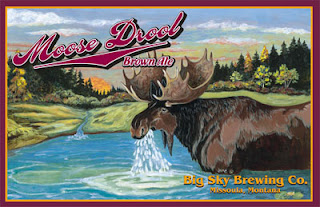 |
| The groves on Judson St. |
 |
| Next stop for these oranges: beer. |
Hangar 24 Brewery Tour and Tasting
Drive an hour east of Los Angeles on the 10 or 210 freeways, about 1/5 the way to Las Vegas, and you'll hit Redlands. Drive north on Judson Street past these orange groves, toward the San Bernardino Mountains, and across the street from the Redlands Municipal Airport you'll find Hangar 24 Brewery. Wednesday afternoon I went with the Golden Gopher bar staff for a tour and tasting. Driving through the hot and humid valley heat, I was ready for a beer upon arrival. We were greeted by Wholesaler Market Manager, Rafael Hurtado, and I had a pint as we watched the brewery in action.
The tour was given by
Brewer John Kopta, who moved from Colorado to California a few years ago. As we passed the grain mill and brew kettles, stepping over large hoses on wet concrete, the hum and buzz of room was constant. All these guys (bearded and non-bearded alike) run around in their rubber boots and jeans. To meet current demands, they work 24 hours, 5 days a week. And the space is surprisingly small for the volume they produce. I was floored. At this point I have brewed beer twice, and it is humbling to see
production on a larger scale. A lot of home brewers will make anywhere
from 2 to 5 gallons of beer at a time. At Hangar 24, they brew in 20-25 barrel capacity kettles.
As of April 23rd they have
broken ground for expansion to
DOUBLE brewing capacity and build a
canning system. (Canned craft beer does
not mean it's cheap and tasteless. It's more cost-effective than bottles, and more importantly environment friendly.) Last year they produced just over 15,000 barrels, roughly 3,780,000 pints,
and graduated from a "Microbrewery" to a "Regional Craft Brewery." June marks the 4-year anniversary, so look out for the Anniversary Ale, to be announced.
Just like
El Segundo and
Golden Road, Hangar 24 is dedicated to making
quality brews for locals. Hangar 24 goes the step of sourcing
ingredients locally, not only for the Redlands-grown oranges for the
Orange Wheat (pictured above), but dates grown in Coachella Valley for
Palmero, their dark and fruity Belgian Dubbel. (Part of the
Local Fields Series.) The story is heartwarming: Founder
Ben Cook and buddies flying planes, talking about life and drinking home brew. The rest is a labor of love. Do yourself a favor and make the drive East, fill a growler, and talk beer with these guys.
 |
| Amarillo Pale Ale bottles being labeled |
 |
| Fermentation! |
____________
To conclude, allow me to share my Blunder of the trip.
When you make beer in home brew, after you have boiled the grains and pitched the yeast, you need to seal the fermenter (or carboy) with an airlock and stopper. This allows carbon dioxide to escape, while keeping oxygen out. To make sure no bacteria has any chance, you fill the airlock with a flavorless, sanitized solution such as vodka. On this large scale, the airlock is instead a large metal blow-off tube submerged in a bucket of sanitized solution, and the CO2 escaping looks just like boiling water. Next to
the
Orange Wheat, you can whiff the vapors of orange peel from across the room. I made the mistake of sticking my nose in the bucket and getting one, swift sniff. It was a jolt up my nostril and took my breath away. I've done it once, but I don't recommend this. It's probably on the same brain cell-melting level of huffing in your parents' garage. No, no, no. After we did that,
John mentioned the dangers of working in a brewery: high pressure tanks, exploding kegs, and dangerous chemicals. Duly noted.
______________
Hangar 24 beers are on tap at
Golden Gopher. Stop by in the next few weeks while they still have
Pugachev's Cobra, a 16.5% Russian Imperial Stout and
Hammerhead, a 13.8% Barleywine aged in Rye Whisky barrels, both from the
Barrel Roll Series.
Want some
Chocolate Porter to go? Make sure and stop by
8th Street Bottle Shop. We'll send you home happy.
felicious
(
Check my math: 1 US liquid barrel=252 pints. 252*15,000=3.78 mil.
Feel free to correct!)











